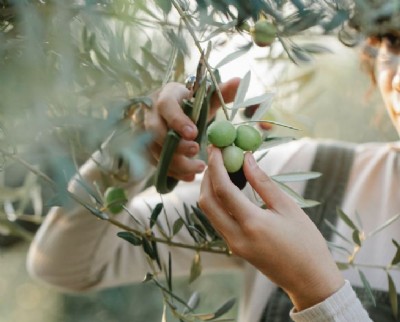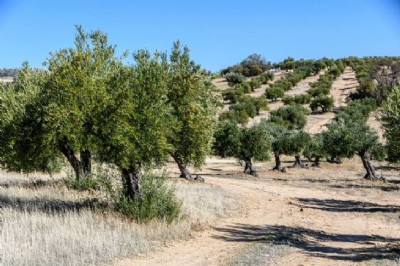
Source: Euroganadería.eu
Undoubtedly, the record prices reached by olive oil during the last two seasons, the last 2022/23 and the current 2023/24, is one of the most relevant news of the current agri-food panorama. The root of this complex situation lies in the combination of a drastic cutback in olive harvests for milling due to drought and the lack of water availability for irrigation, and an inflationary increase in production costs that, with difficulty, have been able to be transferred along the links of the agri-food value chain.
In other productive sectors, a scarce available supply has been palliated with imports and the clearest example is the cereal sector, where despite a very poor national harvest in the 2023/24 marketing year, which should have pushed up prices at origin, the reality is that these are at levels that, together with the very low harvest volume, barely cover production costs, as a consequence of the abundant availability of grain in the European and world environment.
In the olive oil sector, on the other hand, Spain is the world's leading producer, accounting for between 30% and just over 40% of the total volume of olive oil production, and between 50-70%, depending on the season, of the volume in the European Union, with an average of 1.45 million tons between 2018/19 and 2021/22, the record being 1.79 million in the former and reaching almost 1.5 million in the latter, compared to an average world production of almost 3.5 million tons in those seasons.
The drought suffered in the olive groves in the last two seasons broke this situation. In 2022/23 olive oil production reached only 666,000 tons and in the current 2023/24 the forecast is for 750,000-760,000 tons, 15% more than in the previous one, but half of its average productive potential. This volume in the 2022/23 campaign represented just 26% of world olive oil production and 48% of European production and, according to the forecast for the current 2023/24, it will be just over 32% of world and 54% of European production, respectively.
Imports from other EU countries (mainly Portugal and to a much lesser extent from Italy and Greece) and from third countries (Tunisia, Morocco, Turkey, Argentina...) have exceeded an average of 200,000 tons in recent seasons, but have only contributed to alleviate a small part of the supply deficit to meet the needs of domestic demand and the export market, but not to halt the increase in olive oil sales prices at origin and destination.

High prices, no beneficiaries?
Do these high olive oil prices mean an increase in profits for the producer sector or for the rest of the chain? At a macro level and in general terms, no; at a micro or individual level, everyone does their own accounts and knows their own results. Some may be doing better if they have managed, with irrigation, to maintain or increase their harvest and/or production volume; others, on the other hand, much worse if their crop is rainfed and they have had to face fixed costs with very low production yields.
For their part, industrial bottlers and marketers in the domestic market or abroad will have had to adjust margins to the maximum in their negotiations with the distribution chains, also bearing higher production costs, especially due to the high price of olive oil as a raw material.
In general, retailers will have tried to contain their margins, but they have hardly slowed down when it comes to raising the retail price to the consumer, even though this would mean selling less in volume. The reduction in VAT, decreed by the government from 10% to 5% and now extended until mid-2024, and the one that has not yet come into force from 5% to 0%, will barely make a few cents per liter of difference to consumer retail prices.
Are the high prices of olive oil already having an impact on the evolution of its consumption? Yes, it may cause many consumers to desist from consuming this highly appreciated vegetable fat if the market continues to be under pressure, although everything will also depend on the economic situation. The demand for domestic consumption is already falling by 40% compared to the average of the last four seasons and exports are down by 35%, levels still below the increase in prices, which have more than doubled compared to the average of the four previous seasons and have risen by more than 50% in the last two seasons.
Is this market evolution sustainable over time? No, in the medium term, the ideal would be to find a middle ground, a better balance between supply and demand, with prices that are remunerative for all links in the value chain, but that do not scare off consumers or the foreign markets that have been so hard to conquer.
Although in this complex situation there may be agents or operators who, on an individual basis, benefit or at least maintain their margins, in general terms no link in the value chain gains (or gains less than expected), but rather all of them lose (but some lose more than others).
Poor harvest and high costs
As analyzed by the Spanish Association of Olive Mill Municipalities (AEMO), the producer of olives for milling is having a bad time in general, because although there is a very high price for its producer, the volume available for sale on the market is very small, with the addition of production costs that remain very high and are 60% higher per kilo of oil produced.
Precisely, this Association updated its study on the "Approximation to the costs of olive oil production to 2023", in which it states that, due to inflation (price increase of cultivation work costs and other actions) and the reduction of the harvest, producing a kilo of olive oil in Spain increased more than double in the last campaign 2022/23, something that is repeated in the current 2023/24. This means that, despite the high prices of olive oil on the market, olive growers do not see their activity remunerated in most cases.
As for industrial or cooperative mills, which transform olives into olive oil, the situation is not favorable either. They have much less volume to mill, but they maintain the fixed costs of personnel, energy, amortization of investments, etc., which are derived from only opening their doors, which entails multiplying the costs per unit of production. Hence, the initiatives agreed by several cooperatives in this campaign to concentrate product and milling in a single mill, in order to save on fixed costs.
In turn, olive oil bottlers and marketers have no choice but to pass on the high prices of olive oil at origin to the distribution staff, which is not at all easy for them because this increase generates greater tensions in negotiation and pressure on them, who try to contain these increases as much as possible in order to place their product on the shelves or on the international market. The high prices of the raw materials they pack, therefore, do not generate higher profits for them, not only because of the enormous difficulties in passing them on to the next links in the chain, but also because they have less supply for sale. If they manage to maintain or not lose too much in profit margins, that is already a lot.
Wholesale and retail distribution, for their part, also seek to contain their margins as much as possible in view of the high price at which bottled olive oil is offered. Even so, they try not to lose or to lose as little as possible, since they also have to bear lower sales in each and every olive oil reference as they pass on the high prices of the raw material to their retail prices and, at the same time, have to face commercial competition. In any case, they lose the least because they can compensate this loss with price increases in other products within the vegetable fats category or in the broad portfolio of food and beverage sales.
Finally, consumers, at the end of the value chain, are the other big losers, along with most producers, mainly because, faced with high prices, they have to decide whether to maintain their consumption or reduce it. However, the resistance and loyalty shown to this emblematic food product is surprising all those involved in the olive sector, despite the very strong increase in the retail price on the shelves, who were expecting a greater "substitution" effect with other vegetable fats, especially sunflower oil. Have consumers finally understood that when they consume extra virgin olive oil they are taking health, as is already the case in other parts of the world? It is not clear to me.
